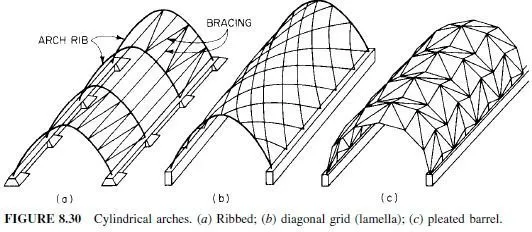Many river crossings do not require more than one truss span to meet navigational requirements. Nevertheless, continuous trusses have made possible economical bridge designs in many localities. Studies of alternative layouts are essential to ensure selection of the lowestcost arrangement. The principles outlined in preceding articles of this section are just as applicable to continuous trusses as to simple spans. Analysis of the stresses in the members of continuous trusses, however, is more complex, unless computer-aided design is used. In this latter case, there is no practical difference in the calculation of member loads once the forces have been determined. However, if the truss is truly continuous, and, therefore, the truss in each span is statically indeterminant, the member forces are dependent on the stiffness of the truss members. This may make several iterations of member-force calculations necessary. But where sufficient points of articulation are provided to make each individual truss statically determinant, such as the case where a suspended span is inserted in a cantilever truss, the member forces are not a function of member stiffness. As a result, live-load forces need be computed only once, and dead-load member forces need to be updated only for the change in member weight as the design cycle proceeds. When the stresses have been computed, design proceeds much as for simple spans.
The preceding discussion implies that some simplification is possible by using cantilever design rather than continuous design. In fact, all other things being equal, the total weight of members will not be much different in the two designs if points of articulation are properly selected. More roadway joints will be required in the cantilever, but they, and the bearings, will be subject to less movement. However, use of continuity should be considered because elimination of the joints and devices necessary to provide for articulation will generally reduce maintenance, stiffen the bridge, increase redundancy and, therefore, improve the general
robustness of the bridge.



